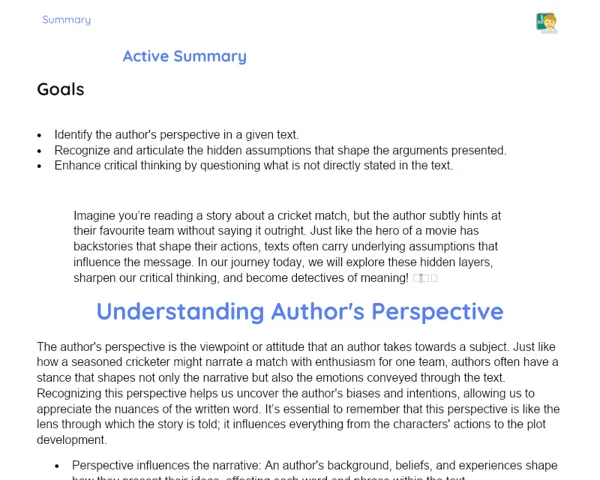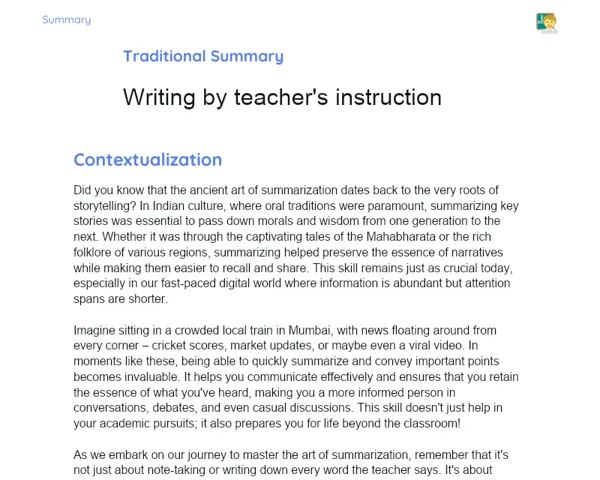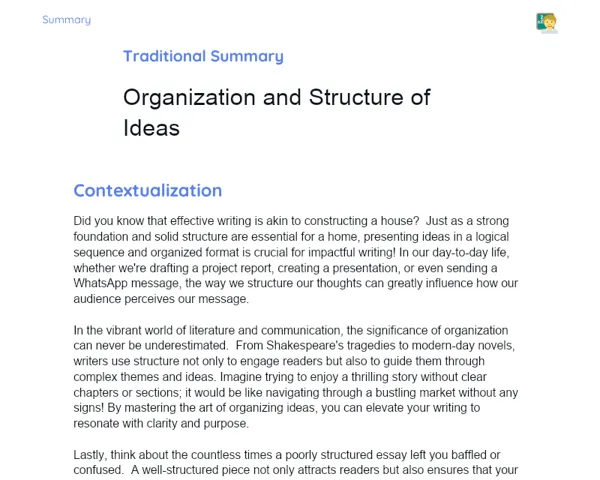Summary Tradisional | Adjectives: Introduction
Contextualization
Adjectives play a crucial role in the English language as they describe or qualify nouns, adding vital information about their features. For example, when we say 'a big dog', the adjective 'big' tells us more about the dog's size, enhancing the clarity and detail of our statement. Adjectives enrich our descriptions, enabling us to express our thoughts and feelings with greater accuracy.
In today’s lesson, we focused on commonly used adjectives and their opposites, such as 'short' and 'tall', 'slow' and 'fast'. Grasping these opposite adjectives is essential, as they effectively help us articulate differences and contrasts. Furthermore, it's good to remember that in English, adjectives typically come before the noun they modify, which might differ from how it's positioned in other languages, such as Portuguese.
To Remember!
Definition of Adjectives
Adjectives are words that describe or qualify nouns, providing additional details about them. They can indicate various characteristics, including size, colour, shape, age, and more. For instance, in sentences like 'a big dog' and 'a red apple', the adjectives 'big' and 'red' offer specifics about the nouns 'dog' and 'apple', respectively.
Adjectives are vital for crafting precise and informative descriptions. Without them, our sentences would lack the richness and clarity we often need to convey meaning effectively. They allow us to present our observations in a more vivid and comprehensive manner, enhancing understanding of our intended message.
Moreover, adjectives can express opinions and feelings. For instance, 'a beautiful painting' or 'a delicious meal' reveal the speaker’s perspective regarding the nouns being described.
-
Adjectives describe or qualify nouns.
-
They indicate characteristics like size, colour, shape, and age.
-
Adjectives contribute to precise and detailed descriptions.
Types of Adjectives
There are various types of adjectives that describe different aspects of nouns. Some common types include size adjectives (big, small), speed adjectives (fast, slow), and height adjectives (tall, short). Each type offers specific information about the noun it modifies.
Size adjectives, such as 'big' and 'small', convey the relative size of the noun being described. For example, 'a big house' and 'a small cat' illustrate how these adjectives qualify their respective nouns.
Speed adjectives, like 'fast' and 'slow', pertain to how quickly something moves or happens. For instance, 'a fast car' and 'a slow turtle' showcase this type of adjective. Height adjectives, such as 'tall' and 'short', refer to the stature of a noun, like in the phrases 'a tall building' and 'a short person'.
-
Size adjectives indicate the relative size of the noun.
-
Speed adjectives describe the velocity of an action.
-
Height adjectives relate to the stature of a noun.
Opposite Adjectives
Opposite adjectives consist of pairs of words with contrasting meanings. Comprehending these pairs is fundamental for illustrating differences and contrasts effectively. Common examples include 'short' and 'tall', 'slow' and 'fast', 'happy' and 'sad'.
Using opposite adjectives provides a clearer and more vivid picture of what we are describing. For instance, by stating 'The boy is short' and 'The girl is tall', we emphasize the height difference between the two, which enhances the clarity of our description.
Additionally, mastering opposite adjectives can help expand our vocabulary and enhance our communication skills. Knowing that 'slow' is the antonym of 'fast' allows us to utilize these terms appropriately in various contexts, enriching our spoken expression.
-
Opposite adjectives have contrasting meanings.
-
They effectively showcase differences and contrasts.
-
Understanding opposite adjectives broadens vocabulary and enhances communication.
Position of Adjectives
In English, the placement of adjectives is a significant grammatical aspect: they usually come before the nouns they modify. This might contrast with other languages, like Portuguese, where adjectives often follow the nouns. For example, in English, we say 'a big house', whereas in Portuguese it is 'uma casa grande'.
Recognizing the correct adjective placement is crucial for forming grammatically accurate sentences in English. This practice eliminates confusion and guarantees clear communication. Regularly using this structure will help reinforce this rule in our understanding.
Moreover, the placement of adjectives can alter the sentence's meaning. For instance, 'a great man' signifies that the man is outstanding or admirable, while 'a man great' would not be grammatically correct in English and could mislead the reader or listener.
-
Adjectives generally precede the nouns they describe in English.
-
Correct positioning of adjectives is vital for grammatically accurate sentences.
-
Frequent practice aids in internalizing the adjective position rule.
Key Terms
-
Adjectives: Words that describe or qualify nouns.
-
Size Adjectives: Adjectives indicating the relative size of the noun.
-
Speed Adjectives: Adjectives describing the quickness of an action.
-
Height Adjectives: Adjectives relating to the stature of a noun.
-
Opposite Adjectives: Pairs of adjectives with contrasting meanings.
-
Position of Adjectives: A grammatical rule stating that adjectives typically come before the nouns they describe in English.
Important Conclusions
In this lesson, we explored the significance of adjectives in English and their role in describing or qualifying nouns. We learned that adjectives can signify characteristics like size, speed, and height, enhancing the quality of our descriptions. Additionally, we delved into the importance of opposite adjectives for effectively illustrating differences and contrasts, which broadens our vocabulary and enhances our communication.
The position of adjectives is a fundamental grammatical rule in English, where they typically precede the nouns they modify. This positioning is crucial for forming grammatically correct sentences and fostering clear communication. Regular practice of this structure will help solidify our understanding and prevent confusion.
The knowledge acquired about adjectives is vital for enriching our descriptions and improving the effectiveness and precision of our English communication. We encourage students to continue exploring and practicing the use of adjectives, as this will greatly contribute to their fluency and comprehension of the English language.
Study Tips
-
Practice forming simple sentences in English using the various adjectives learned. The more you use them, the easier it will become to remember and apply them correctly.
-
Read English texts and underline the adjectives you find. Try to understand how they describe nouns, and note down any new adjectives that you come across.
-
Engage in exercises that involve identifying adjectives within sentences and creating sentences with pairs of opposite adjectives. This will help reinforce your understanding of adjectives and their positioning.



